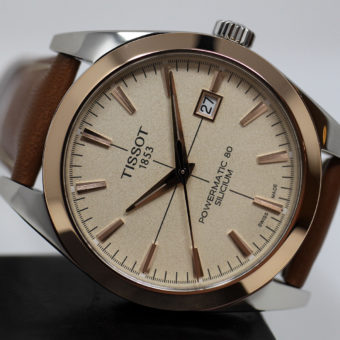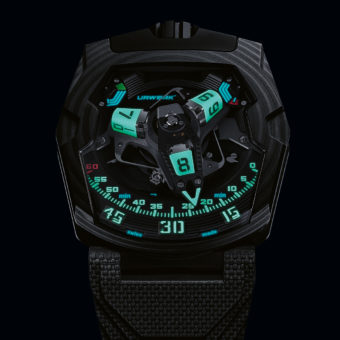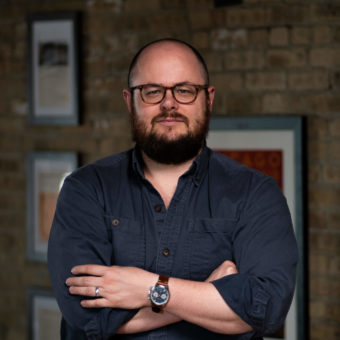This article was originally published in the November/December 2022 Issue of the WatchTime print magazine.
The surge in popularity that independent watch brands and watchmakers have enjoyed these last several years is apparent and clearly here to stay. These “indie” Swiss, German and Japanese brands and watchmakers have been able to meet the moment by recruiting top talent that would previously have stuck to the bigger names in the industry. This talent pool is part of the larger watchmaking infrastructure that supports and nurtures the proliferation of independent brands that can appeal to the most discerning and seasoned collectors out there. This infrastructure is comprised of an existing manufacturing apparatus, human resources such as watchmaking talent, and a deep institutional memory that can only be established after decades — and indeed centuries — of watchmaking history.
But what about independent brands and watchmakers sprouting from less horologically arable lands such as the United States? America is a land of contradictions when it comes to the watch world. It is the biggest market for Swiss watches in the world but it’s also an infrastructural desert with little to no remnants of a once storied watchmaking industry. But, there is hope. The acceleration of virtual communication and networking due to rapid developments in tech and social media has allowed some exceptionally committed Americans to shake off the rut and pioneer a new path. The pandemic forced everyone’s hand, even those most resistant to Zoom calls and Whatsapp messaging, and the landscape will never be the same again.

Still, a strong enthusiastic market and technological developments do not change this one fundamental fact: There is no infrastructure or substantial talent pool that can support a healthy watchmaking environment in the States. But, recent history shows us that those tenacious enough have innovated and thrived. It would be criminal not to discuss Roland G. Murphy who started RGM back in 1992 and to this day operates what is as close to a proper manufacture as we’ve seen in the States. Richard Paige also comes to mind with his practice of building watches around vintage American pocketwatch movements. There is also Los Angeles-based Weiss Watch Company, which was founded by Cameron Weiss in 2013 and has impressively created an in-house caliber that is machined and finished right here in California. And, of course, there is Oak & Oscar. The Chicago-based brand was started in 2015 and managed to successfully dodge the then-unavoidable designation of “microbrand” and be seen as an authentic small independent brand.
All the aforementioned examples had to rely on their own wits and skills to see any measure of success in America due to that pesky and total lack of an infrastructure. This wouldn’t always have been the case, but we’d have to look all the way back to the 19th and early 20th centuries when grand old names like Waltham, Elgin and Hamilton were at the height of their success and manufacturing capability. While the fall of these brands is a sad story, the truly depressing and salient point is that so much of the manufacturing equipment and machinery was also scrapped or hauled off. Instead of what could have been a goldmine of incredible original watchmaking equipment, there was simply nothing left but the memory of a bygone era.

Fast forward to 2022 and while this inherent issue lingers, there are brands sprouting in the States that are creating some truly impressive watches. With the aforementioned rapid developments in global networking and communication in the past few years, it has become possible for a brand to be founded in the States while selectively choosing some of the best craftsmen in Switzerland to work with.
In an interview with Peter Speake and Daniela Marin’s The Naked Watchmaker, Roland G. Murphy was asked about the tough times early on and his answer touched on just how difficult it was for his then-young small brand to get traction with retailers (which ceased to be an issue once RGM embraced a direct-to-consumer model). This was the early nineties, when getting exposure and attention for a new watch brand, let alone one based in the States, would have been a daunting challenge.

This is where today’s media and, particularly, social media environment comes in. The ability for upstarts to have their product and message broadcast to the enthusiast community is like nothing that could have been foreseen even a decade ago. From a purely anecdotal perspective, I now have longtime friends here in Los Angeles or in my hometown of New York who, previously having no interest in watches, are now deep into the hobby. Indeed, watches have never been a part of the cultural zeitgeist here in the States as much as they are now. Leaving any personal feelings aside, it is impossible to deny that Instagram has been the most effective tool of horological evangelization in recent memory. Somehow this heady brew of enthusiasts, media, photographers and, yes, influencers has come together to create an ecosystem where those whose knowledge would once be capped off at green crowns and Calatrava crosses are now learning and reading about F.P. Journe and Alain Silberstein.
So, while not potent enough to compensate for America’s lack of infrastructure, the ability to connect and network these days has allowed some incredibly talented and entrepreneurial-minded people to carve out their own stake in the watch world. Recently I spoke to and spent time with three such people, two based here in Los Angeles and one based in New York. I won’t get into any cringeworthy hackneyed takes on America as a “melting pot,” but it would be ridiculous not to note the diversity embodied by these three (and myself, for that matter). Each of these three is in different stages of brand growth and development. Josh Shapiro of J.N. Shapiro has been producing and selling his much-lauded watches for almost five years now; Aren Bazerkanian of Havid Nagan is busy fulfilling orders for his debut HN000 watch and buyers should begin getting their pieces by early 2023; finally, Carlos Simón Ramirez and his partners Judd Wood and Eric Lau of MEC recently launched and have begun taking orders for the inaugural MEC 1 watch.

I’ll begin with Josh Shapiro, founder of eponymous J.N. Shapiro watches and a rare talent in the art of guilloché. Over the course of four or five years now, I’ve watched J.N. Shapiro grow from two people (with the very gifted Artur Akmaev) working out of an improvised garage space to an eight-person team operating out of a full-fledged workshop. In fact, the latest addition to Shapiro’s workshop is a half a million dollar Kern Evo Milling machine that is the first of its kind to be used for watchmaking here in the United States. For the first couple of years, watches were initially a secondary gig for Shapiro who, up until recently, worked as a vice principal at a school here in Los Angeles. Learning and education is clearly a preeminent theme for Shapiro who spent seven years studying Watchmaking by George Daniels and the sections on guillochage (or, engine turning) were the spark that would lead to Shapiro’s definitive work: the infinity weave. It took hundreds of hours to perfect and master his basketweave within a basketweave, but the end result creates a fractal pattern effect that is simply staggering. Collectors with a keen eye for picking up on “the real deal” have flocked to Shapiro, seeking out one of his Infinity Series watches. In 2018, Shapiro hoped to sell six watches. Fast forward to today and over 90 watches have been produced with demand far exceeding supply. So far, Shapiro has used German cases and movements, but he is fast approaching the launch of a fully in-house watch that may be released by the time you are reading this article.

Of course, Shapiro has faced challenges and roadblocks. The biggest challenges largely (and predictably) stemmed from being American-based. However, being a voracious self-learner negated the dissuasive effects of geographic isolation from the handful of centralized industry hubs. When I asked him about any initial rejections, Shapiro said, “I had one watch retailer tell me I was absolutely crazy to try and make watches in America. He told me it would take hundreds of thousands of dollars and no one would be interested in a fine watch made in the U.S. … He was right about the first part!” This echoes the same challenge Roland G. Murphy experienced almost 30 years ago but fortunately, the proliferation of watch media and social media allowed Shapiro to get his message out there and the naysayers have been thoroughly disproved.
Just about a year after Shapiro launched his his first Infinity Series watch in 2018, there was another Los Angeles-based watch brand that was just getting started. Then in his twenties, Aren Bazerkanian was working at the F.P. Journe boutique on Sunset Boulevard while dreaming of starting a watch brand of his own. Unlike Shapiro, Bazerkanian couldn’t rely on leveraging mastery of a skill like engine turning to use as a launchpad to creating a brand. He did, however, possess something equally potent when properly honed: a vision. I think it would be fair to loosely refer to this as the Jean-Claude Biver model of clearly identifying and executing the objective “big picture” vision one has for a watch brand.
When asked about this, Bazerkanian said. “I did feel a sort of shame early on as I am not a watchmaker and I asked myself, ‘Who am I to start my own Swiss brand?’ I am missing most of the inherent characteristics that would typically be attributed to the founder or CEO of a Swiss watch brand. But as I progressed in development of the brand, I realized more and more that I am as passionate as these watchmakers, founders, CEOs (Mille, Gauthier, Busser) … why can’t I contribute in my own way?”

Bazerkanian’s vision culminated in Havid Nagan, named after havidenagan, which is the Armenian word for “eternity.” Earlier this year I was able to see the fruits of his labor with a prototype of the inaugural Havid Nagan HN000 watch. By now many of you readers have likely seen the HN000 as it has deservedly made its way across the enthusiast press and blogosphere. One wouldn’t immediately guess this was the debut watch from someone with no watchmaking experience when studying the rounded square case, guilloché dial and micro-rotor movement. However, Bazerkanian recognized the critical importance of finding and successfully working with various manufacturing partners in order to make his vision a reality.
This, once again, highlights the sea change that has taken place within the industry due to the embracement of modern communication. Even during the pandemic and the ensuing global shutdown, the Havid Nagan project was not derailed. Bazerkanian diligently ushered along talks and his roster of partners delivered in turn. The Havid Nagan HN000 required prototyping with a few different names, but it was Schwarz-Etienne in La Chaux-de-Fonds that would end up being the manufacturing partner for both the case as well as the movement.
The case design was inspired by the work of Paul Mc-Clean, a renowned Los Angeles architect known for creating some of the most lavish contemporary homes in Southern California. Bazerkanian would sketch out initial designs, iterating in tandem with Schwarz-Etienne, who would use their practical manufacturing and CAD (Computer Aided Design) expertise to get the final design as close as possible to his vision. The resulting rounded square case is done in titanium with a surprisingly substantial curve on the caseback that is quite effective in enhancing wearability.

In addition to the case, he would also tap Schwarz-Etienne to provide the movement for the HN000. The automatic Caliber ASE 200 is the same micro-rotor movement used for the Schwarz-Etienne Roma Synergy collaboration with Kari Voutilainen (albeit, the finishes on that watch were done by Les Ateliers Kari Voutilainen). The HN000 opts for more contemporary finishes like dark NAC treatment as well as classic touches like côtes de Genève and perlage. Cadranor did the trio of stamped guilloché dials in Arka blue, Jade green, and Plum purple, which are lacquered and hand-painted to achieve a lovely finish.
As we’ve learned, the journey for an American-based independent watch brand isn’t simple but Bazarkanian has an optimistic outlook saying, “My being American is not a challenge other than the fact that I am here and the manufacturers are in Switzerland. It’s not a big challenge but it requires concise organization and communication between us. In fact, my being American is something I lean into, not run from. It’s time the industry evolved and the ecosystem becomes more diverse and multifaceted.”

The third and newest American brand I want to discuss is MEC (Micro Engineering Company), which was founded during the pandemic by a trio of friends Carlos Simón Ramirez, Judd Wood and Eric Lau. Unlike J.N. Shapiro or Havid Nagan, who have embraced traditional dial finishing (albeit to different degrees), MEC has gone in another direction Ramirez refers to as “New Art Deco.” Art Deco was born in France but adopted by New York City where glorious structures like the Chrysler and Empire State buildings came to define the aesthetic. It takes but a passing glance at the MEC 1 to recognize that it was designed with a very specific type of collector in mind. “Neo Art Deco” is an apt description considering the off-beat design utilizing a jump hour layout with a lume-capped allsapphire minutes hand. There is lighthearted self-awareness at play here with such a nontraditional take on the decidedly traditional jump hour complication. This layout allows the jumping hour indicator to take center stage. The sapphire indicator is set within a lumed disk and done in a unique Art Deco-inspired font that really is the heart and soul of the MEC 1.
MEC is the youngest of these American-based brands and has opted to work with new manufacturing partners based out of Switzerland. Ramirez says it’s a bit too soon for them to divulge all the salient info but I do look forward to tracking the brand’s growth and development.
America is, little by little, gaining its footing as not just a place where watches are sold but a place where watches and watch brands can be born. The three I discussed here are at different stages in their growth, but the sheer grit and determination it takes to gain a foothold in the States is a testament to its potential. As for more new brands and watchmakers coming out of the United States, keen eyes will be watching and rooting for you.
To subscribe to the WatchTime print magazine, click here.







It would always be nice in an article like this to mention what is the price, or typical price range, of these watches. It is sort of important because some nice watches can be bought for less than $1000 while others can cost hundred times more. And a link where to find more information or how to contact the manufacturer would be helpful as well.
Thank you for keeping us up to date on what is going on in the watch industry!!!!